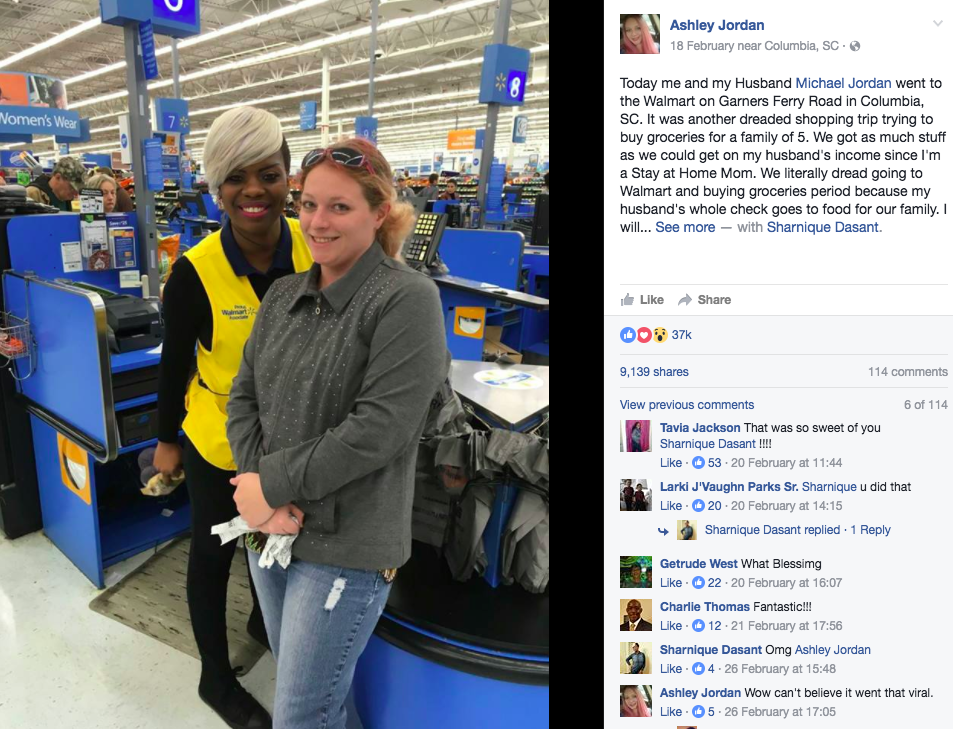This Heartwarming Story Highlights a Bigger Issue for American Families
By:
A viral story from South Carolina, while heartwarming, also illustrates how widespread food insecurity is in America.
 Facebook.com - facebook.com
Facebook.com - facebook.com
On February 18, Ashley and her husband Michael were doing their bi-weekly shopping trip at Walmart, which Ashley described in a subsequent Facebook post as "another dreaded shopping trip trying to buy groceries for a family of 5."
"We got as much stuff as we could get on my husband's income since I'm a Stay at Home Mom," she elaborated in the post. "We literally dread going to Walmart and buying groceries period because my husband's whole check goes to food for our family."
But the Jordans were in luck, because their cashier, Sharnique Dasant, took it upon herself to cover half of their $200 bill. Ashley took a picture with Dasant and posted the story on Facebook, where it promptly went viral and got over 9,000 shares.
But not everyone is lucky enough to have someone like Sharnique Dasant helping them purchase groceries.
According to food bank network Feeding America, the Jordans are just a few of 42.2 million Americans who lived in food insecure households in 2015, including 13.1 million children. The United States Department of Agriculture defines food insecurity as "a household-level economic and social condition of limited or uncertain access to adequate food."
While Dasant's gesture was certainly noble, it's clear that the benevolence of individual grocery store cashiers is not a sustainable solution to America's problems with access to affordable and nutritious food.
Feeding America points out that poverty is just one factor that leads to food insecurity. However, the government benefits available to help families through difficult financial times are disappearing or being curtailed.
43 million Americans were on some form of Supplemental Nutrition Assistance Program benefits (formerly known as food stamps) in 2016. This number had ballooned from 32 million in 2008 because of more working families needing help due to the recession.
But in 2016, with the improving economy, over one million Americans lost their SNAP eligibility after the reinstatement of state mandates requiring recipients to find a part-time job within three months of enrolling. An artifact of 1996's welfare reform, the mandate was brought back by dozens of state governors who believed able-bodied adults who aren't working shouldn't receive benefits, even if they have legitimate reasons for not working.
Beyond that, President Trump and the new GOP Congress are proposing a host of changes and cuts to SNAP, including cutting benefits off to immigrant households (used by over 43 percent of families with an undocumented parent), tightening eligibility standards, restricting types of food that can be purchased, and possibly instituting block grants that would give each state a certain amount of money and greater discretion as to how they use it.
SNAP benefits provide an average of $125 a person per month to food insecure families, according to USDA figures. While none of these plans have been completely laid out, it's clear that many families who depend on government aid for at least part of their food security could suffer.
And no amount of $100 purchases by well-meaning grocery store cashiers will change this.
